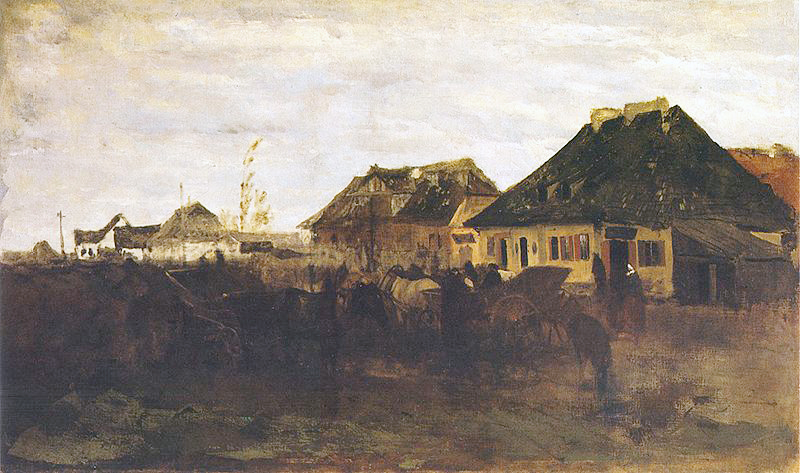One sunny day several years ago as my family took in our town’s annual Memorial Day parade, an amiable-seeming man bounded up to my two small children and presented them with miniature American flags before quickly moving on down the route. Touched, I turned to my neighbor to inquire who this public-spirited individual was. My neighbor shot me a quizzical look, as if unsure whether or not I was pulling his leg. “The mayor” he ultimately replied, a continued note of skepticism in his voice. I had been living in our town for nearly five years by that point. As I would later learn, my children’s flag-bearing benefactor had been in office for most of that time.
How is it that someone comes to live in a place for almost half a decade without being able to recognize its mayor? Or to recall his name once he has been identified as such? Or even to be sure of his political party (which I could guess at given our town’s pronounced leanings in national elections, but that I wouldn’t have bet the farm on given the possibility of idiosyncratic results at the local level)? In particular, how do these things happen when the clueless someone in question is a person who had always considered himself politically and socially engaged—aware of important legislation being considered in Congress, familiar with major cases pending before the Supreme Court, well read on the significant public policy issues of our day?
It is against such shortsightedness—the tendency of all too many of us to ignore what is going on in our own backyards—that Seth D. Kaplan delivers a desperately needed warning in his new book Fragile Neighborhoods: Repairing American Society, One Zip Code at a Time. At first blush, Kaplan would seem an unlikely evangelist for the importance of focusing on the local. An expert on fragile nation-states, Kaplan has spent his career working with organizations like the World Bank and the U.S. State Department in places like Nigeria, Colombia, Libya, and Yemen. Surely this is a man for whom what happens in individual neighborhoods is small beer as compared with the important work of running a country? Yet for Kaplan, when comparing two countries and asking why one has succeeded where the other has failed, what matters most is not national policies but “societal dynamics—the strength of the social glue, the nature of relationships across groups, and the role of social institutions.” These are things that manifest (or fail to manifest) at the local level. The social health of our neighborhoods “determines how safe we are, the quality of the schools our kids go to, what resources we have access to daily, the kinds of job opportunities we have, our psychological well-being, and even . . . how long we live.” It also shapes, in Kaplan’s view, the state of the nation.
Which is bad news for the United States given Kaplan’s assessment that “the social decay we are experiencing in neighborhoods across America is unlike anything [he has] seen elsewhere.” This is a startling statement given the many troubled corners of the globe where Kaplan has hung his hat. As distressed as those places are, the people in them “are simply much warmer, their relationships much thicker than what [he has] experienced in countless neighborhoods here in the US.” Americans “don’t feel obligated to help our neighbors, give back to our community, or even (in many cases) care for members of our own family—and we resist joining any group or association that might create such obligations.” The result? We are “some of the most depressed, anxious, addicted, alienated, and untethered people in the world.” Not even material wealth is sufficient to protect against the effects of social poverty, with many of these problems plaguing middle- and upper-class neighborhoods as well.
The fundamental flaw besetting traditional approaches to social reform, according to Kaplan, is that they are typically top-down, one-size-supposedly-fits-all “solutions” that take no account of the unique dynamics of the specific places that are to be reformed—the particular challenges facing a given community and the assets already at its disposal for meeting those challenges. As Kaplan notes, even where initiatives succeed at relieving distress in the short run, they will ultimately have done more harm than good if they undermine the local social institutions necessary for a community to thrive over the long haul. It is not that there is no role for politics or national policy. According to Kaplan, both “[g]overnment assistance (a tool of the left) and more efficient markets (as favored by the right)” are necessary. But these interventions will be effective only insofar as they work through and are supportive of local social institutions.
The core of Fragile Neighborhoods consists of five case studies of “social repairers,” organizations committed to improving the social ecosystems of particular places. Rejecting the top-down, vertical model of social reform, these organizations employ what Kaplan labels a “sideways approach.” This involves “work[ing] horizontally across the landscape to strengthen the interconnected web of institutions and relationships locale by locale while finding ways for each locale to work with the others better.” The organizations profiled—ranging from a group seeking to revitalize a neighborhood in Detroit to an effort to expand educational opportunities for youth in rural Appalachia—highlight the folly of a top-down approach. As the leadership of the Appalachian effort grasped early on, even within the region what works in one county may not work in another (let alone nationally). By developing solutions that are place-based and relationship-focused, Kaplan’s social repairers have achieved some remarkable successes. Perhaps most dramatically, the East Lake Foundation, by focusing on a specific neighborhood in southeast Atlanta, managed to reduce violent crime by 90% while improving a range of other metrics including employment rates, income levels, test scores, high school graduation rates, and home values.
In light of these successes, is it reasonable to dream that we might one day really repair American society one zip code at a time using Kaplan’s sideways approach? Conversions to the localist creed are certainly possible. Within a couple years of being unable to identify our mayor, I was knocking doors for his opponent during a primary challenge. (Flag distribution having proven a poor proxy for good governance.) But an intense focus on place is very much swimming against the cultural tide. In describing his own close-knit neighborhood, Kaplan notes the role played by Shabbat, the Jewish day of rest. For one day each week, Kaplan and his neighbors turn off their devices, avoid cars and public transportation, and refrain from activities like cooking and shopping. Instead, they pack the local parks and pay each other long social calls. In the words of a visiting friend, it is as if the community has temporarily returned to “a time before automobiles, television, and apps dominated daily life.” As Kaplan acknowledges, this method of community bonding is unlikely to be widely replicated anytime soon. Indeed, most of society seems headed in the exact opposite direction, with daily lives steadily more dominated by work, by overscheduled child-rearing, and by technology.
It has become trendy for college and universities to assign one book to be read by every member of their incoming freshmen classes, a common educational touchpoint to be experienced by all students before they scatter across their respective majors. Would that Fragile Neighborhoods and books like it were among the works assigned. They would provide an essential corrective to the lessons imparted by our culture, lessons that to date are largely reinforced by our institutions of higher education: That success requires constant mobility and rootlessness. That working hard means giving your life over to your work. That the only things that matter happen on the national and international stage. That money can insulate you from the problems of the community around you. Unlearning these lessons will not be easy. But as Kaplan makes clear, the fate of the nation may well depend upon it.
Image credit: “Winter in a Small Town” via Wikimedia Commons







